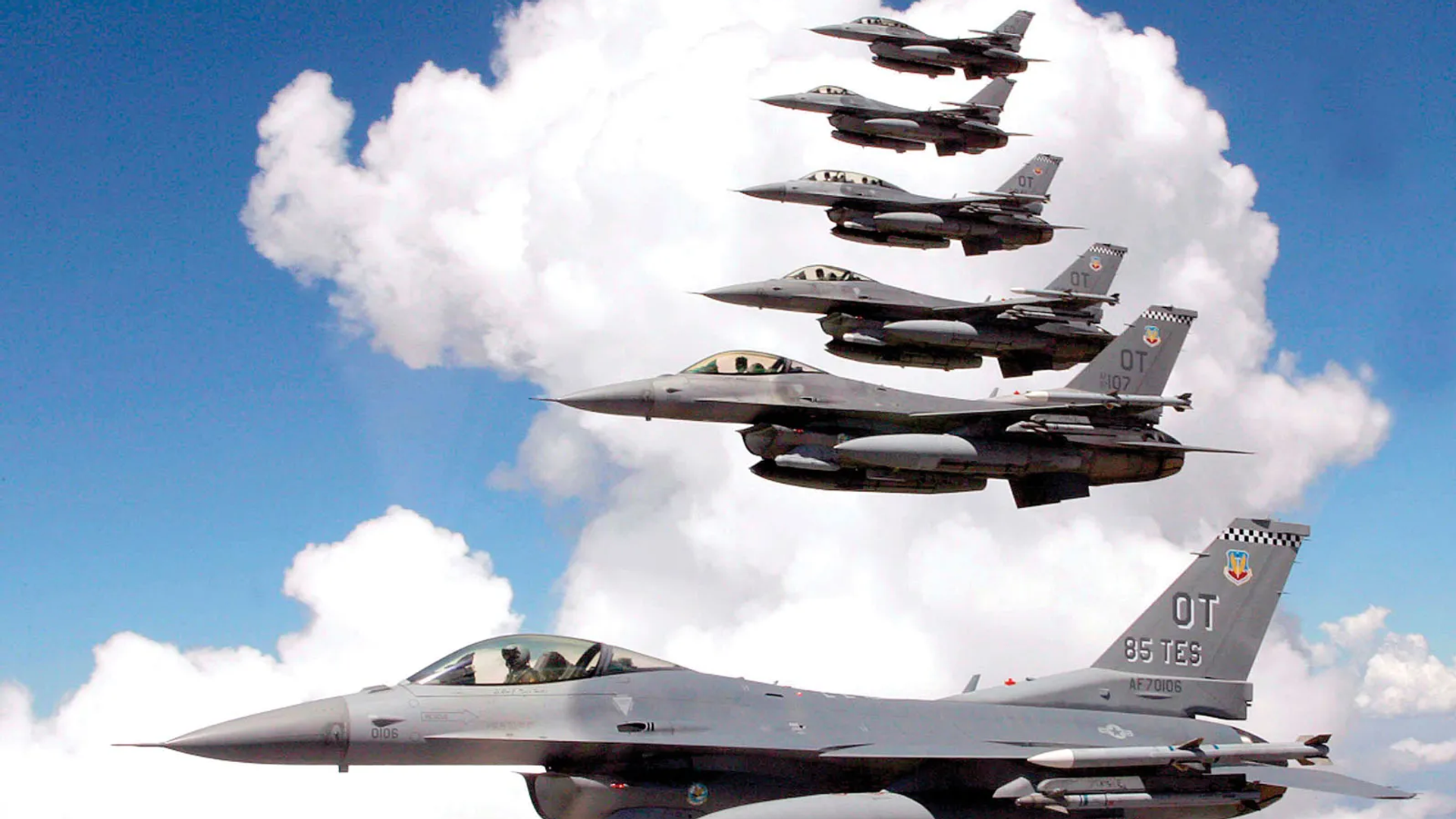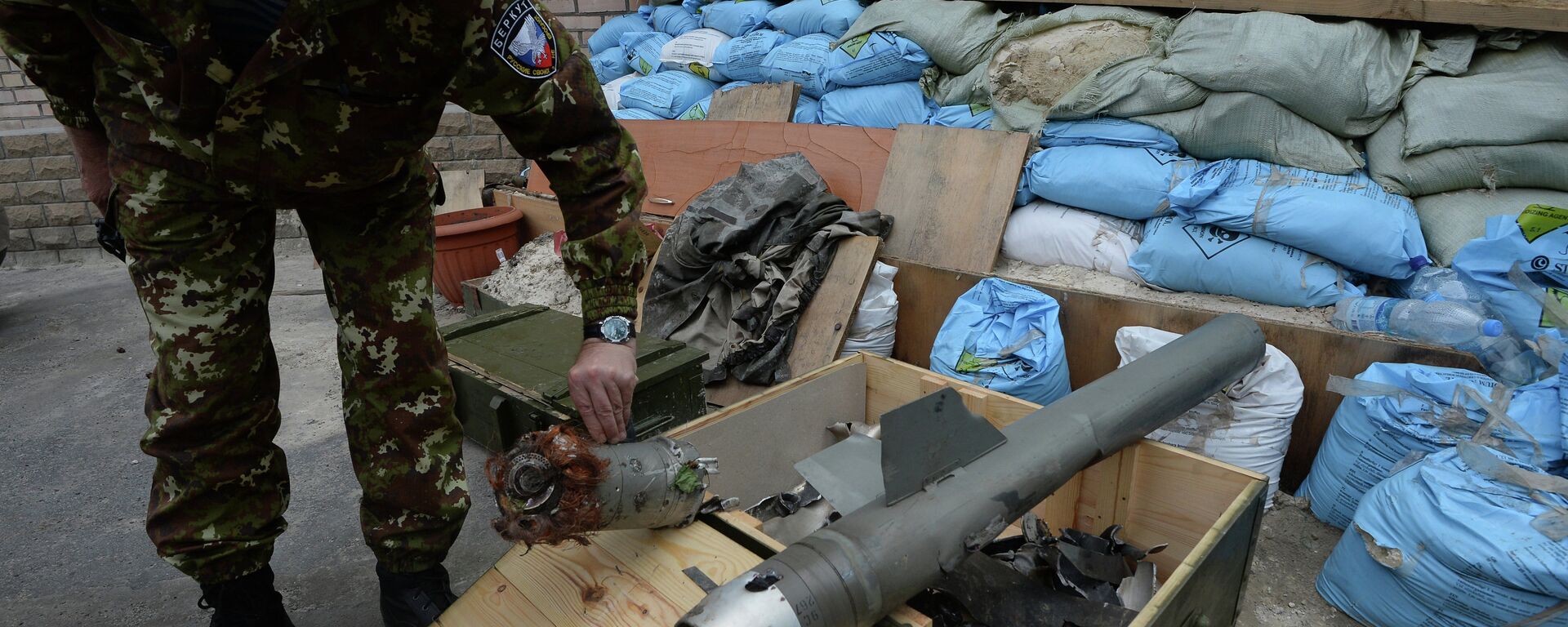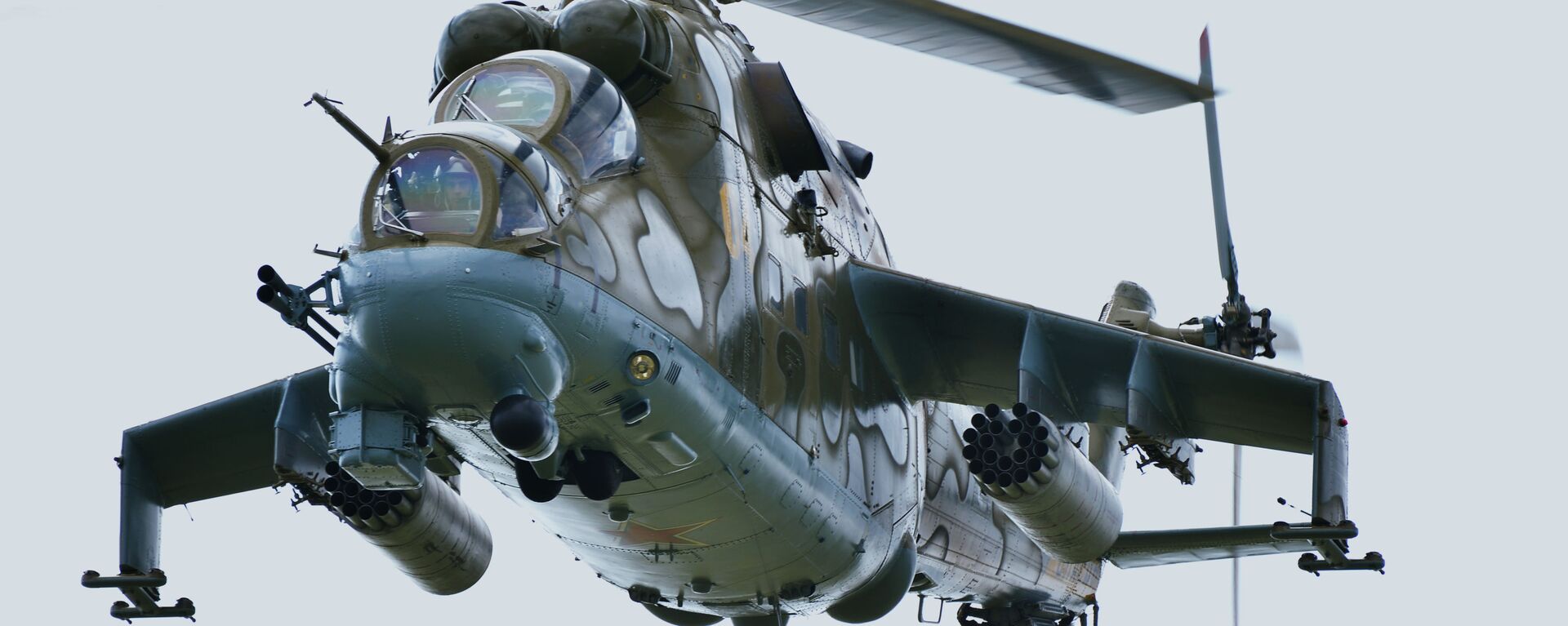Ukrainian Pilots Operating F-16s Would Be Flying Targets: Here's Why
19:15 GMT 18.07.2023 (Updated: 20:51 GMT 18.07.2023)

© Photo : US Air Force, Tom Reynolds
Subscribe
The White House confirmed Sunday it would allow European allies to start training Ukrainian pilots to fly F-16 fighter jets. Sputnik reached out to Vladimir Popov, an honored military pilot of Russia, to find out how long this training could take, how much it may cost, and the major - possibly game breaking - hurdle standing in Washington’s way.
The catastrophically slow pace of Ukraine's counteroffensive in the ongoing NATO-Russia proxy war has led to increasingly louder demands from Kiev asking the US and NATO to send F-16 fighters to the country to give its ground forces some semblance of air support.
US officials have privately questioned whether adding the multi-role fighters to the battlefield would improve Kiev’s position, given the dense Russian air defense network which would be able to target enemy fighters even more readily than NATO-delivered drones, rockets and missiles.
Washington nevertheless took another step in relenting on the issue Sunday, with US national security adviser Jake Sullivan announcing the president issued the “green light” for allies to train Ukrainian pilots to fly the planes. The US "will allow, permit, support, facilitate and in fact provide the necessary tools for Ukrainians to begin being trained on F-16s as soon as Europeans are prepared," Sullivan said.
Denmark’s Defense Ministry announced last week that the kingdom, plus Belgium, Canada, Luxembourg, the Netherlands, Norway, Poland, Portugal, Romania, the UK and Sweden are theoretically ready to train Ukrainian pilots to operate F-16s, and that training could start as early as next month.
It remains unclear which countries will be ready to part with their own stocks of F-16s to send to Ukraine. However, multiple NATO countries plan to eventually upgrade their air forces to F-35s, which US media speculated should ease the transfer of their older planes to Kiev. Denmark, the Netherlands, and Norway have been listed as top candidates in this regard.
A leaked US Air Force assessment published in May estimated Ukrainian pilots could be trained in the basic operation of F-16s in as little as four months.
Russian Air Force Major-General (ret.) Vladimir Popov says the real required training time would be six months, and up to a year to train a pilot worth his salt.
“Six months is absolutely realistic. Why? Because if a pilot is generally trained to fly other types of aircraft – in Ukraine’s case this is typically the Su-25 or the MiG-29, a well-trained pilot could theoretically be retrained to take off, land, and perform a holding maneuver aboard the F-16 even in three months’ time. But after that it will be necessary to train on the combat use of the aircraft’s weapons,” Popov told Sputnik, explaining that this is where the time requirements start to pile up.
The expert noted that in the F-16’s case, it would require “a minimum” of two additional months, whereas it would take up to a year for a pilot - even an experienced pilot - to master the use of the jet’s unguided rockets, missiles and small and large-caliber bombs, among other munitions.
For a green pilot, who may be capable of confidently taking off, landing and flying in a holding pattern, putting him in a position where he has to perform sorties would amount to a cruel betrayal, Popov said.
"He will simply be sent off as a flying target. Sure, three out of 10 pilots could get lucky and return from the first mission, and perhaps even more. But after that, all the same, in the space of two or three flights this will mean downed pilots, because they don’t have the experience and professional training. That’s the problem. That’s the distinction,” the veteran Russian pilot explained.
Ground Crew Training Easier, But Not by a Lot
Training Ukrainian ground crews to service and repair the F-16s would be easier, and could probably be done in six months, in Popov’s estimation, especially if it’s limited to unscrewing faulty, worn-out or damaged components and replacing them with new ones.
However, again, high-quality repair work, including the knowledge to be able to tinker with and modify aircraft and fix complex systems, would require additional training of personnel to enable them to match their theoretical knowledge with practical, real-world experience, Popov said. In addition, issues related to the compatibility of equipment and standards is another headache that must be taken into account, and which could rapidly rack up costs.
Modern fighter planes are a complicated piece of equipment, Popov emphasized, and require servicing to their communications systems, radars, avionics equipment, the frame itself and its engine(s). “That is, these are different specialties, and various specialties are trained over various periods,” he noted.
Differences Between F-16s, Ukraine’s Soviet Jets
On the surface level, there is no fundamental difference between F-16s and Ukraine’s existing fleet of fighter aircraft, Popov said.
"As pilots, we all understand the aerodynamics of flight of any aircraft. We understand the physics, the air flow around the wing and fuselage, the relationship between the stabilizer on the keel, the wings and engine thrust," he explained.
"But as a rule there are nuances, and a lot of them. Even flying the same type of aircraft, but of a different modification, may mean some qualitative differences," Popov added, saying it would be necessary to clarify which of the many modification(s) of the F-16 Ukrainian pilots would actually be trained on and given to fly, given the differences – including in terms of thermodynamic performance, between them.
Getting these nuances across to pilots will require explaining them in the classroom, and then demonstrating them in practice flights. “And then, only after carrying out several flights independently, will the pilot be able to understand these nuances and use them correctly in [the] future,” Popov said. Otherwise, he added, the pilot, particularly if they are under psychological pressure, could make a fateful mistake - either crashing the plane or getting shot down in a combat situation.
Not Enough Time
Time is a crucial factor in the training of competent pilots, Popov said, and this is a precious commodity which the Ukrainian Air Force simply lacks, in his view.
On top of that is the language barrier, which in this case will inevitably play a negative role. "It’s one thing to quickly learn and perceive something in your native language, and another to learn through a translator or you yourself translating in your head, for example, from English into Russian, and then acting, and vice versa. All of this takes time, and in this case there will be certain difficulties."
Additionally, the cost – including everything from finding qualified flight instructors to the resources spent on fuel, munitions expended in testing, and the aircraft’s service life, which also isn’t unlimited in conditions of rigorous training, must also be taken into account, with total costs running into the hundreds of thousands of dollars per pilot, if not more, Popov said. "Because this is very complex and expensive equipment; its maintenance is also labor-intensive and therefore [also] expensive."
Not Enough Pilots
Popov believes that although NATO could take "green" Ukrainian recruits who would be of very limited value on the battlefield straight from the academy and train them to fly F-16s, finding and retraining experienced pilots would be much more difficult, given the Ukrainian Air Force’s catastrophic losses over the past year-and-a-half.
"If they recruited 30-40, that would be a lot. And there are maybe 25-30 today who are free and can begin training tomorrow. Because someone needs to continue flying the combat aircraft that they have – MiG-29s, Su-25s, Su-27s," the veteran pilot estimated.
If Ukraine were able to recruit NATO pilots effectively willing to act as mercenaries, that would be a different story, particularly if it found pilots with experience flying the F-16. If a handful of such pilots could be scraped together, they themselves would need training time, not only to learn the geography, but also to navigate the dense Russian air defenses and fighter jets in duals (something NATO pilots accustomed to operating in environments with little to no enemy air cover probably won’t be used to).
Politically Cheap, Reputationally Costly
Taking into account the many costs associated with the above-mentioned issues helps explain the US and NATO’s “dithering” on the issue of F-16 deliveries to Kiev, Popov says, pointing out that it’s “one thing to take a political decision – to talk about it and create a certain atmosphere around it … and something else completely to carry it in practice, and I think they’ll think about it a dozen more times before proceeding.”
Furthermore, if the pilots are trained and a decision to deploy F-16s to Ukraine is ultimately made, NATO and its Ukrainian proxies can’t realistically expect Russia to just wait around until the jets are attacking Russian positions, Popov said. "Of course we will take certain measures to complicate their retraining, to complicate their lives at operational airfields … Strikes will be carried out on these airfields, on these storage bases, at these training centers, if this is done in Ukraine, that is."
In this sense, Popov stressed that deploying F-16s to Ukraine could become a very costly form of negative PR for the US defense industry, undermining the image of a jet which continues to be operated by dozens of countries around the world, and which is still generally considered effective. “And suddenly it will be beaten mercilessly.”
“When it comes into contact with our armed forces, I think it's effectiveness will be reduced many times over, and this is bad advertising for this aircraft. Will the Americans go for it so easily? I think they’ll think about, even if they have the desire to send it and the money is already allocated…Because I think you’ll agree that this would be a very big stumbling block for the US military-industrial complex,” resulting in questions from the F-16’s foreign buyers, the pilot said.
“It’s one thing, I repeat, for politicians to talk about it confidently. And something else for military practitioners, who make decisions, and who must calculate all these retraining programs and other programs on the use of this aircraft,” Popov summed up.





